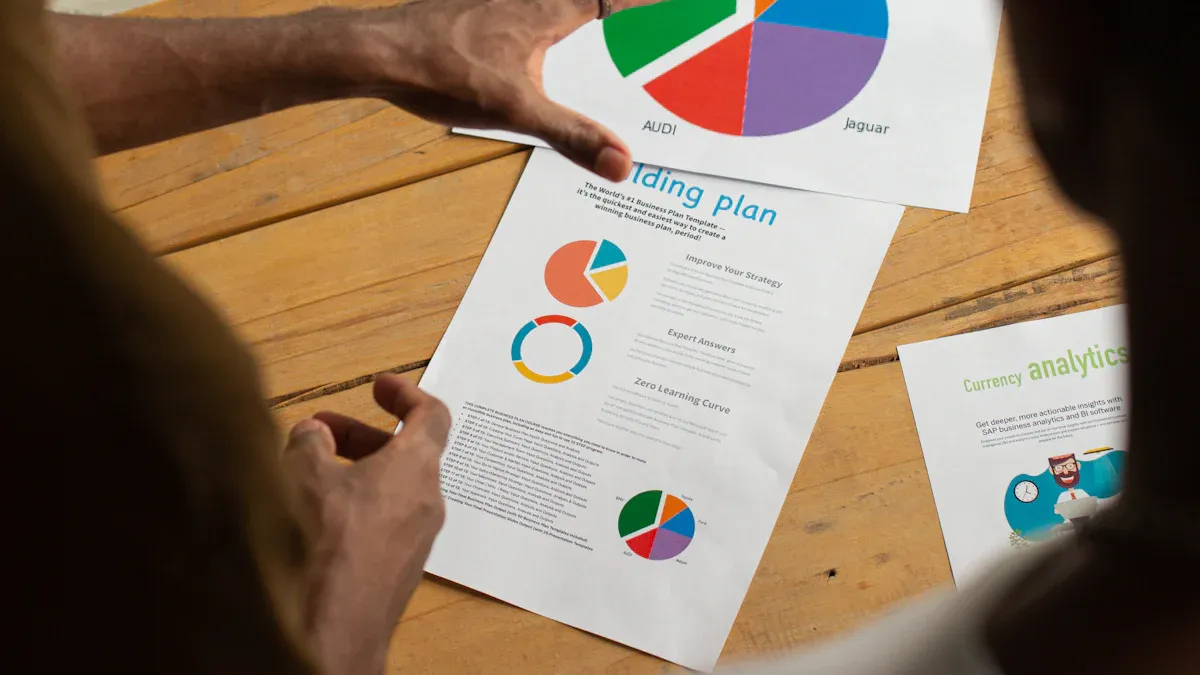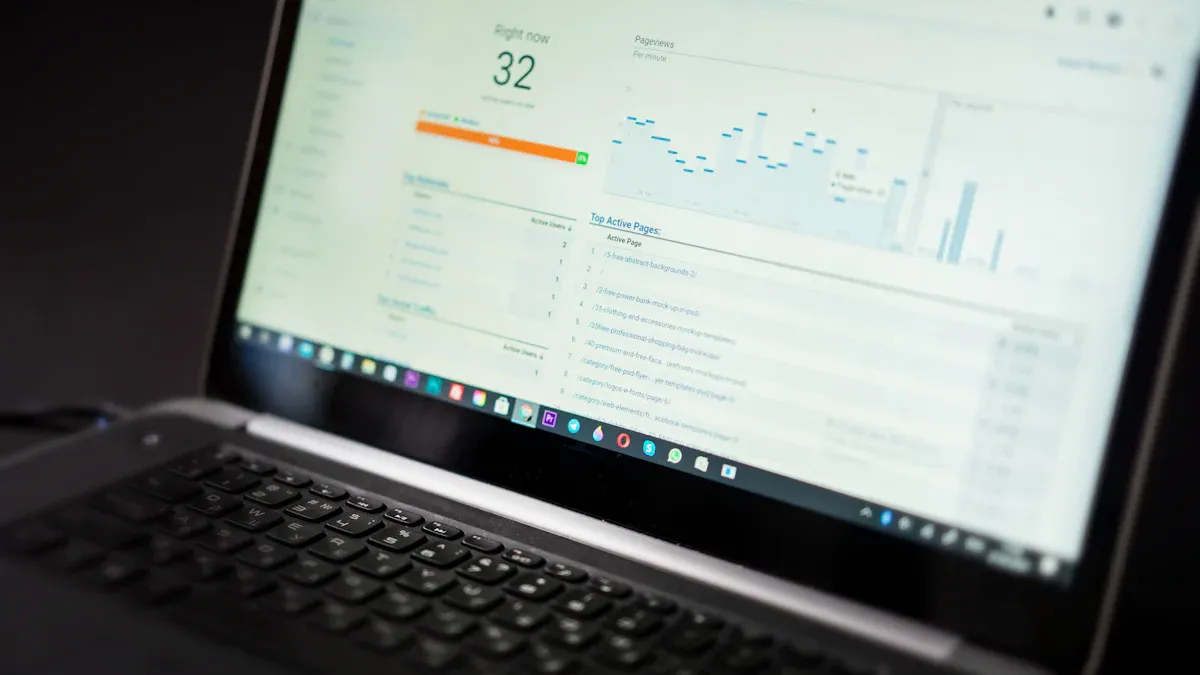How to Use Apache Superset with Kafka for Real-Time Insights

Apache Superset and Kafka are exceptional tools for managing and visualizing data. Apache Superset offers a user-friendly platform for building dashboards and creating visualizations, while Kafka specializes in real-time data streaming and processing. By integrating Apache Superset with Kafka, you can seamlessly analyze live data and make swift, informed decisions.
In today’s fast-paced business environment, real-time analytics is crucial. Research from McKinsey highlights that businesses leveraging live data insights can boost operational efficiency by as much as 20%. Additionally, a report from Dresner Advisory Services reveals that 77% of organizations utilizing real-time analytics experience improved financial performance.
The integration of Apache Superset with Kafka provides numerous advantages:
Real-time data visualization through dynamic and interactive dashboards.
Enhanced capabilities for monitoring streaming data.
Faster decision-making with the most current insights available.
Together, Apache Superset and Kafka empower you to maximize the value of your data and drive impactful results.
Key Takeaways
Connecting Apache Superset with Kafka shows live data visuals. This helps make better choices using the newest information.
To set up Kafka, you need Java, ZooKeeper, and good topic management for smooth data flow.
Adding Apache Druid in the middle helps take in Kafka data safely. It makes the data ready to use in Superset right away.
Making dashboards in Superset means creating charts and putting them together for a full view of live data.
Live data analysis can make work faster by 20%. It helps businesses act quickly on changes and problems.
Setting Up Apache Kafka for Real-Time Data Streaming

Installing and Configuring Apache Kafka
To set up Apache Kafka for real-time data streaming, you need to prepare your environment with a few prerequisites:
Download and set up Apache Kafka on your local machine or use a cloud-based Kafka service.
Install Apache Maven to build projects.
Use an Integrated Development Environment (IDE) like IntelliJ IDEA or Visual Studio Code.
Once you have the prerequisites, follow these steps to install and configure Kafka:
Verify Java installation by running
$ java -version.If Java is missing, download the latest JDK from Oracle's website.
Extract the JDK files and move them to
/opt/jdk.Set the
JAVA_HOMEandPATHvariables in your~/.bashrcfile.Install ZooKeeper by downloading and extracting it, then create a configuration file and start the server.
Download and extract Apache Kafka to complete the setup.
Creating and Managing Kafka Topics
Kafka topics act as channels for your data streams. To manage them effectively, follow these best practices:
Use a continuous integration pipeline to validate topic names.
Enable
auto.create.topics.enablefor automatic topic creation, but configuredefault.replication.factorandnum.partitionsproperly.Manually create topics using Kafka utilities for better control.
Avoid auto topic creation for Kafka Streams. Instead, create input and output topics manually.
Producing and Consuming Data Streams in Kafka
You can produce and consume data streams in Kafka using built-in tools and commands. Here are some common actions and their corresponding commands:
Action | Command |
|---|---|
Create topics |
|
Run a producer |
|
Run a consumer |
|
Kafka also provides four core APIs: the Producer API for sending data, the Consumer API for subscribing to topics, the Streams API for processing data streams, and the Connector API for integrating Kafka with other systems. These tools allow you to handle real-time data efficiently and integrate it with platforms like Apache Superset Kafka for visualization.
Configuring Apache Superset to Work with Kafka
Using Apache Druid as an Intermediary for Kafka Data
Apache Druid acts as a powerful intermediary between Kafka and Apache Superset. It enables real-time analytics by leveraging its built-in indexing services. As data streams into Kafka, Druid ingests it and makes it queryable almost instantly. This ensures that you can analyze events as they arrive without delays. Druid also manages ingestion processes effectively, maintaining exactly-once ingestion even during system failures. This reliability makes it an ideal choice for integrating Kafka data with Apache Superset.
Setting Up a Data Source in Superset for Kafka
To connect Apache Superset with Kafka, follow these steps:
Install the necessary drivers:
Use the KSQL Python DB-API and SQLAlchemy dialect.
Run the following commands:
pip install ksql pip install sqlalchemy-ksql
Add KSQL as a Database in Superset:
Navigate to the 'Data' menu and select 'Databases'.
Click the '+ DATABASE' button and enter the SQLAlchemy URI in this format:
ksql://ksql-server-host:ksql-server-port
Test the Connection:
Use the 'Test Connection' button to verify communication between Superset and the KSQL server.
Explore and Visualize:
Once connected, you can query KSQL streams and tables. Use this data to create charts and build real-time dashboards.
These steps ensure that Apache Superset can seamlessly interact with Kafka data, enabling you to visualize and analyze streaming information.
Querying Kafka Data in Superset with SQL or KSQL
Apache Superset allows you to query Kafka data using SQL or KSQL. SQL provides a familiar syntax for querying structured data, while KSQL offers a specialized approach for streaming data. After setting up the data source, you can write queries to extract meaningful insights. For example, you might use SQL to aggregate sales data or KSQL to monitor real-time user activity. Superset's interface simplifies this process, letting you focus on creating actionable insights from your Kafka streams.
To enhance your experience, ensure proper configurations like pipeline YAML, application YAML, and Docker files. These configurations streamline the connection between Apache Superset and Kafka, making the integration process smoother.
Building Real-Time Dashboards in Apache Superset

Creating Visualizations with Kafka Data
To create visualizations with Kafka data in Apache Superset, you need to follow a structured approach:
Configure KSQL as a Data Source:
Set up KSQL as a data source in Superset by providing the necessary connection details. This step ensures that Superset can access and query Kafka streams.Design Visualizations:
Choose from Superset's wide range of charts and graphs to represent your Kafka data. For example, you can use line charts to track trends or pie charts to display proportions.Build Dashboards:
Combine multiple visualizations into a single dashboard. This provides a comprehensive view of your streaming data, making it easier to monitor and analyze.
By following these steps, you can transform raw Kafka data into meaningful insights using Apache Superset.
Designing and Customizing Real-Time Dashboards
Superset offers several customization options to help you design real-time dashboards tailored to your needs.
Customization Option | Description |
|---|---|
Set the cache timeout value on charts, databases, or tables to define the refresh interval. | |
Force Refresh | Use the 'force refresh' button to manually update the dashboard with the latest data. |
You can also use the Explore builder to view dataset columns and metrics. Create a time-series bar chart via the drop-down menu and save it to an existing or new dashboard. Resize charts using the 'Pencil' button and drag them to the desired position. Additionally, you can add text, markups, and annotations in edit mode to provide context or highlight key insights. These features allow you to design dashboards that are both functional and visually appealing.
Tip: Experiment with different chart types and layouts to find the best way to present your data.
Enabling Real-Time Data Refresh in Superset
Keeping your dashboards updated with real-time data is crucial for accurate insights. Superset provides several methods to enable real-time data refresh:
Manually refresh the dataset using the 'Refresh Dashboard' option.
Schedule periodic refreshes through cron-like expressions in the dataset's configuration settings.
Configure cache invalidation to force a refresh whenever data changes.
Use the REST API for programmatic refreshes or cache invalidation.
These options ensure that your dashboards always display the most current data from Kafka streams. By leveraging these features, you can maintain the accuracy and relevance of your real-time analytics.
Practical Use Cases and Benefits of Apache Superset Kafka Integration
Real-Time Analytics Use Cases
Real-time analytics has become essential for industries that rely on immediate insights to drive decisions. By integrating Apache Superset with Kafka, you can unlock powerful use cases tailored to your needs.
Industries such as media, entertainment, and data-driven organizations benefit the most from this integration. For example, media companies can analyze live stream metrics to monitor viewer engagement. Entertainment platforms can test video quality in real time to ensure a seamless user experience. Data-driven organizations can track unique live viewers to optimize their content strategies.
You can also use this integration to monitor operational systems. For instance, e-commerce businesses can track inventory levels and sales trends as they happen. Financial institutions can detect fraudulent transactions instantly, reducing risks. These use cases demonstrate how Apache Superset and Kafka empower you to act on live data without delays.
Business Benefits of Real-Time Insights
Real-time insights provide a competitive edge by enabling faster and more informed decision-making. When you integrate Apache Superset with Kafka, you gain access to dashboards that visualize live data streams. This allows you to identify trends, anomalies, and opportunities as they occur.
Businesses that adopt real-time analytics often experience improved operational efficiency. For example, you can automate alerts for critical events, reducing the time spent on manual monitoring. Real-time insights also enhance customer satisfaction. By responding to issues immediately, you can deliver a better user experience.
Additionally, this integration supports scalability. As your data grows, Kafka handles the streaming workload, while Superset ensures that your dashboards remain responsive. This makes it easier for you to adapt to changing business needs. Ultimately, the combination of Apache Superset and Kafka helps you stay ahead in a data-driven world.
Integrating Apache Superset with Kafka involves three key steps:
Configure KSQL as a data source in Superset by providing connection details.
Design visualizations using Superset's diverse chart options to represent Kafka data streams.
Create dashboards by combining visualizations for a comprehensive view of real-time data.
This integration unlocks the power of real-time analytics. Businesses using live data insights can improve operational efficiency by up to 20%. For instance, a retail company reduced excess stock by 30% using real-time customer insights. Similarly, a major airline cut delays by 25%, enhancing customer loyalty.
Tip: Tools like Quix and custom visualization plugins can simplify the integration process and enhance your dashboards.
By adopting this approach, you can transform your data into actionable insights, enabling faster decisions and better outcomes. Explore this integration to stay ahead in today’s data-driven world.
FAQ
What is the role of Apache Druid in this integration?
Apache Druid acts as a bridge between Kafka and Superset. It ingests real-time data from Kafka, indexes it, and makes it queryable. This ensures you can analyze streaming data instantly while maintaining reliability and scalability.
Can you use Apache Superset directly with Kafka?
No, Superset cannot connect directly to Kafka. You need an intermediary like Apache Druid or KSQL to process and structure the streaming data. These tools make the data accessible for visualization in Superset.
How do you enable real-time data refresh in Superset?
You can enable real-time refresh by setting cache timeout values, scheduling periodic updates, or using the REST API. These methods ensure your dashboards display the latest data from Kafka streams.
What are the prerequisites for setting up Kafka?
You need Java Development Kit (JDK), Apache Maven, and an IDE like IntelliJ IDEA. Install and configure ZooKeeper and Kafka on your system. Ensure your environment variables are set correctly for smooth operation.
Is coding experience necessary for this integration?
Basic coding knowledge helps but is not mandatory. Tools like KSQL simplify querying Kafka data. Superset’s user-friendly interface allows you to create dashboards without extensive programming skills.
Tip: Familiarize yourself with SQL or KSQL for better control over data queries.
See Also
Integrating Live Data Into Superset For Instant Insights
Using Apache Kafka For Quick And Easy Data Streaming
Comparing Apache Superset And Tableau For Data Visualization
A Beginner's Guide To Spark ETL Processes
Linking PowerBI With Singdata Lakehouse For Enhanced Data Freshness

